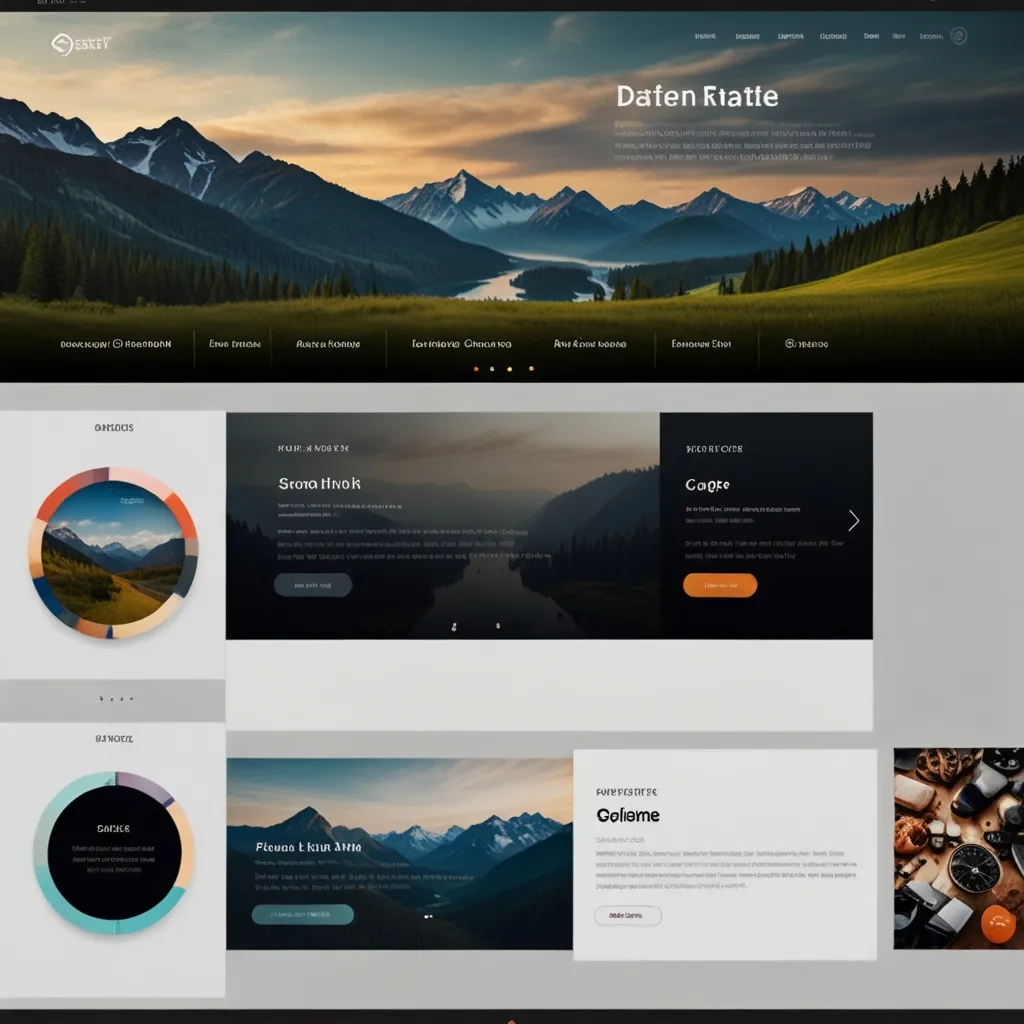Angular CDK, or Component Development Kit, is a game-changer for developers looking to create stunning UIs. It’s like having a secret weapon in your toolkit, giving you the power to build advanced components that’ll make your users go “wow!”
Let’s dive into what makes Angular CDK so special. First off, it’s not just another UI library. Nope, it’s a set of tools and utilities that help you create your own custom components from scratch. Think of it as the foundation for building your dream house – it gives you the structure, but you get to decide on the style and finishes.
One of the coolest things about Angular CDK is its flexibility. You’re not locked into a specific design system or visual style. This means you can create components that perfectly match your brand or project requirements. It’s like having a blank canvas and all the best paints at your disposal.
Now, let’s talk about some of the key features that make Angular CDK a must-have for any serious Angular developer.
First up, we’ve got the Overlay module. This bad boy allows you to create floating panels, dialogs, and tooltips with ease. It handles all the tricky positioning and scrolling issues for you, so you can focus on making your UI look awesome. Here’s a quick example of how you might use it:
import { Overlay, OverlayConfig } from '@angular/cdk/overlay';
import { ComponentPortal } from '@angular/cdk/portal';
@Component({...})
export class MyComponent {
constructor(private overlay: Overlay) {}
openDialog() {
const config = new OverlayConfig({
hasBackdrop: true,
positionStrategy: this.overlay.position().global().centerHorizontally().centerVertically()
});
const overlayRef = this.overlay.create(config);
const dialogPortal = new ComponentPortal(DialogComponent);
overlayRef.attach(dialogPortal);
}
}
This code creates a centered dialog that appears over a backdrop. Pretty neat, huh?
Next, we’ve got the A11y module. Accessibility is super important these days, and this module makes it a breeze to implement. It provides utilities for managing focus, handling keyboard events, and even live announcements for screen readers. Your users with disabilities will thank you!
The Drag and Drop module is another fan favorite. It lets you add drag-and-drop functionality to your app with minimal effort. You can create sortable lists, draggable dialogs, or even complex drag-and-drop interfaces. Here’s a simple example:
<div cdkDropList (cdkDropListDropped)="drop($event)">
<div *ngFor="let item of items" cdkDrag>{{item}}</div>
</div>
import { CdkDragDrop, moveItemInArray } from '@angular/cdk/drag-drop';
@Component({...})
export class MyComponent {
items = ['Item 1', 'Item 2', 'Item 3', 'Item 4'];
drop(event: CdkDragDrop<string[]>) {
moveItemInArray(this.items, event.previousIndex, event.currentIndex);
}
}
This creates a simple drag-and-drop list. Users can reorder items, and the component handles all the heavy lifting for you.
The Layout module is another gem. It provides directives for responsive layouts, making it easy to create UIs that look great on any screen size. You can use it to create complex grid systems or simple responsive containers.
One of my personal favorites is the Virtual Scrolling module. If you’ve ever dealt with long lists in your app, you know how performance can take a hit. Virtual scrolling solves this by only rendering the items currently in view. It’s like magic – your lists will be smooth as butter, even with thousands of items!
Here’s a quick example:
<cdk-virtual-scroll-viewport itemSize="50" class="example-viewport">
<div *cdkVirtualFor="let item of items" class="example-item">{{item}}</div>
</cdk-virtual-scroll-viewport>
@Component({...})
export class MyComponent {
items = Array.from({length: 100000}).map((_, i) => `Item #${i}`);
}
This creates a virtual scroll with 100,000 items, but it’ll perform as if there were only a few dozen. Pretty cool, right?
The Text Field module is another handy tool. It provides directives for creating consistent text inputs across your app. You can easily add features like auto-sizing, character counting, and prefix/suffix elements to your inputs.
Now, you might be wondering, “This all sounds great, but isn’t it going to be a pain to set up?” Fear not! Angular CDK is designed to be easy to use and integrate into your existing Angular projects. You can install it with a simple npm command, and you’re ready to go.
One thing I love about Angular CDK is how it encourages you to think in terms of reusable components. Instead of reinventing the wheel every time you need a dialog or a drag-and-drop list, you can create a base component using CDK and then customize it for each use case. This not only saves time but also leads to more consistent and maintainable code.
It’s worth noting that while Angular CDK gives you a lot of power, it does require a bit of a mindset shift. You’re not working with pre-built components, but rather building blocks that you need to assemble. This can be a bit daunting at first, but trust me, once you get the hang of it, you’ll wonder how you ever lived without it.
Another cool aspect of Angular CDK is its integration with other Angular libraries. For example, Angular Material, the official Material Design component library for Angular, is built on top of CDK. This means you can use CDK to extend or customize Material components, giving you the best of both worlds.
Let’s talk about performance for a second. One of the things that impresses me most about Angular CDK is how lightweight and efficient it is. The team behind it has put a lot of effort into optimizing every module, ensuring that using CDK doesn’t bloat your app or slow it down.
Now, I know what some of you might be thinking: “This sounds great for complex apps, but what about simpler projects?” Well, the beauty of CDK is that you can use as much or as little of it as you need. Need just a tooltip? You can use just the Overlay module. Want to add some keyboard navigation? The A11y module has got you covered.
One last thing I want to mention is the community around Angular CDK. The Angular team has done a great job of fostering a supportive ecosystem, with plenty of documentation, examples, and community-contributed resources. If you ever get stuck, chances are someone else has encountered the same issue and found a solution.
In conclusion, Angular CDK is a powerful toolkit that can take your UI development to the next level. Whether you’re building a complex enterprise app or a simple personal project, CDK provides the tools you need to create stunning, performant, and accessible user interfaces. So why not give it a try? Your users (and your future self) will thank you!






